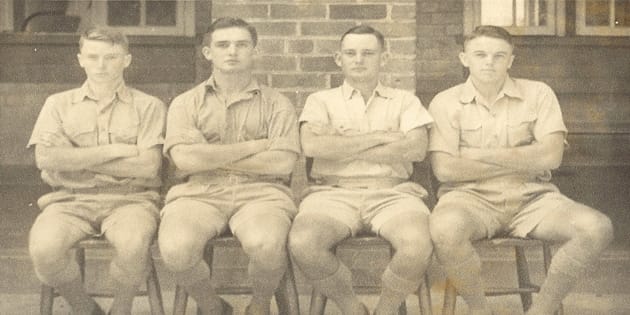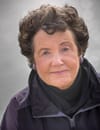Bordering on Freedom

Plumtree Lloyd Bisley Team 1956 L to R John Davy and Kevin Calvert, Hugh Riach and Tim Hughes. Tim and Hugh got lots of practice with a 303 rifle on weekends going ‘bush’ without permission.
Bordering on Freedom
Tim revelled in being a fifteen year old at Plumtree High School. Past the two years of fagging he had not reached the serious position of having a fag of his own or the pressures of final year exams.
Bordering on Freedom
School hours included one subject period before breakfast and four after from Monday to Friday. On Saturday there were two periods in the morning. A three quarter hour rest after lunch was compulsory Monday to Saturday, followed by sport. Tim made the school’s third rugby team as a senior, dropped out of cricket, did reasonably well in hockey, tennis and swimming. He excelled in long distance running and was a first class shot, securing a place in the Lloyd Bisley teams for two years.
If Tim and his friend Hugh Riach were not picked for a team on Saturday afternoon then they would go ‘bush’ without permission to hunt, fish or collect bird nests. They rode their grids (bicycles) past the school sewerage treatment works (teachers didn’t go there due to the stench) then followed an African’s footpath to the narrow track alongside the railway line for five miles to Hugh’s parents Seafield Farm.
Collecting birds’ eggs was a serious hobby. Scientifically documented in an exercise book, one page for each collection showed the date, Latin name, common name, locality, description of the nest, height above the ground, clutch count, and any other relevant details. The Bulawayo Museum, accepting only fully documented collections, took Tim’s.
On Sundays after church Tim and his closest friends Ron Thomson, his younger brother Bob, and Ian Cannell applied for an exeat to leave the school grounds for the day. It was usually granted. Teaching staff made sure there were at least four boys going together for safety reasons. No control was exercised as to where they were going, although they were required to indicate the general area to be visited. Punishment for not returning by evening meal time was gating (no exeat for three weeks).
On their grids The Gang travelled distances up to 100 kilometres (60 miles) into the veld on Sundays. Some of the trips went deep into Bechuanaland (now Botswana). The border guards waved the boys through without passports, confident they would return before dark.
They spent plenty of time freely roaming the 2500 hectare Seafield Farm. Mr. and Mrs. Riach often provided wonderful meals at the farm house, even though the school dining hall staff had supplied a packed lunch. They kept a variety of guns there. Occasionally one was smuggled into the school, hidden until the next weekend, to be used in an area away from the farm. This weekend shooting made them first class marksmen at Bisley especially ‘moving man’ (a cut out that popped out from the butt at random. A butt is a wall in front of the targets of a rifle range, behind which men can safely lower, score and raise targets during firing).
Tim disguised his 410 shot-gun as a fishing rod. The barrel was hidden in a canvas case with a sawn-off fishing rod handle clearly visible protruding from the case which was strapped to the bicycle cross bar. The shot-gun butt was zipped up in Tim’s leather jacket across his chest. The teachers could not understand why he was wearing a leather jacket on a hot day going fishing. A large saddle bag containing the shot guinea fowl and ducks was taken to the rear of the dining hall on Sunday evening. The African kitchen staff, adequately compensated, would cook the wild fowl for The Gang to be collected the next day.
The life of a boarder on the border with Bechuanaland was not all bad.
Many thanks to Tim Hughes of Queensland, Australia for the picture and the excerpts from his unpublished manuscript Matambega and Son written in the 1980’s.
